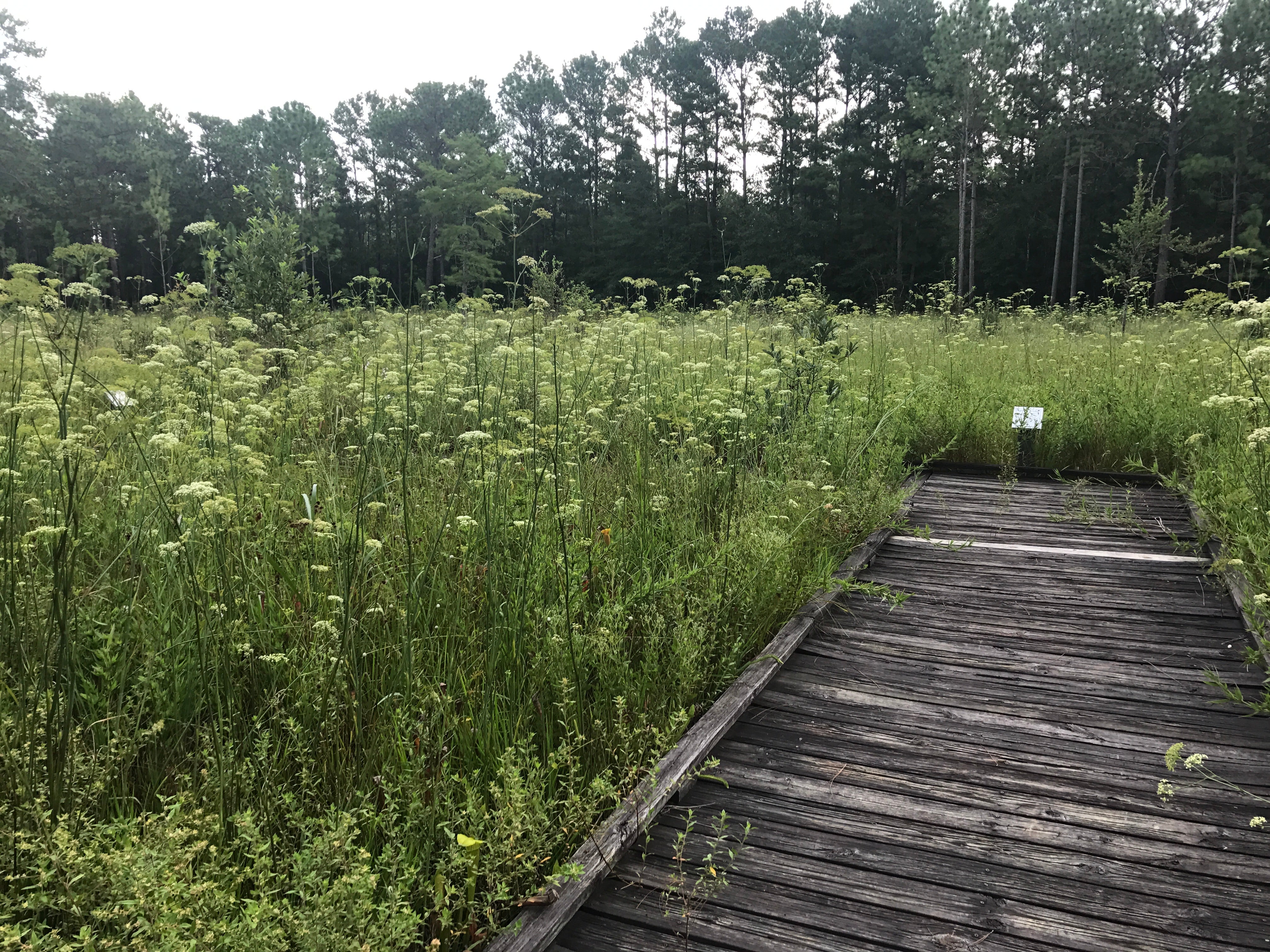Local butterflies have found a 20-acre pollinator garden at the Crosby Arboretum
Published 9:10 am Monday, July 25, 2022
By Patricia Drackett
Director of the Crosby Arboretum and
assistant extension professor of landscape architecture with the Mississippi State University Extension Service.
On our summer walks through the Arboretum’s south Pitcher Plant Bog we find ourselves eagerly anticipating the time period in August when hundreds of Liatris bloom spikes begin to unfurl, especially across from the bench at the Quaking Bog boardwalk. The magenta purple spires of this native perennial are called blazing star or gayfeather. Soon, these plants will be beckoning to passing butterflies from a sea of pitcher plants and tiny white polka dots called pipewort (as well as lady’s hatpins or bog buttons).
A few weeks before the Liatris bloom, we notice the flower heads of water cowbane (Oxypolis filiformis) beginning to sway in the local ditches, as well as the south bog, heralding that a burst of fall wildflowers isn’t far away. Cowbane looks a lot like Queen Anne’s lace, a common non-native roadside plant from Asia and Europe, but it grows in much wetter areas. And it can reach heights of five feet or more! The plant is abundant in the Arboretum’s wettest areas in the south bog and is a host plant for Eastern Black Swallowtail butterflies. When standing among a group of these towering perennials, the hum of insect life is quite evident, as so many species can be found sipping nectar from the water cowbane flowers.
Children delight in searching for the tiny caterpillars as they begin to hatch from eggs, consume the shell, and then begin to munch on the flowers and leaves. When they grow to maturity and build their chrysalises, it is awesome to observe that they have tethered themselves to the plant stem with a thin cord that resembles a very small gauge of fishing line. Then, they begin their transformation to the insect’s adult form – butterflies! Once they emerge, they waste no time in heading straight for the nearby Liatris patch!
Butterfly fans won’t be disappointed if they visit the Arboretum in the late summer, as there is typically a wide variety of butterflies in the Savanna Exhibit. Bring your camera, bring your favorite field guide and a curious child, and count how many species and numbers you can find. We commonly see Gulf fritillary and monarch butterflies, common buckeyes, several species of swallowtails, skippers, and sulphurs, among others. See the fact sheet, “Attracting Butterflies to Mississippi Gardens,” at the Extension website (https://extension.msstate.edu) for a list that includes many native species for your garden.
Butterflies require shelter from the wind and rain and roost at night for protection, for example, on the branches of shrubs. You can provide them with additional shelter by building a log or brush pile in a corner of your garden. Other butterfly-friendly garden features are flat rocks where they can bask in the sun on cool mornings, and wet muddy spots where they can sip minerals from the soil, which is called “puddling”. Build a “puddling station” in a large saucer filled with sand, add a couple of handfuls of composted manure, and add water. You could add a rock or brick on which to rest. There are many videos on the Web on building these habitats. Putting out rotten bananas, citrus, melon, or other over-ripe fruit will also attract butterflies to feed. It’s fun to experiment with different combinations, and an excellent way to use up fruit that is no longer appealing to us, rather than throwing it away.
Join us for an early morning Summer Botany Field Walk on Saturday, July 30 from 9:30 to 10:30. Learn about native plant species in our exhibits and how you can use them in your home landscape, with Arboretum Director Pat Drackett. Members free, and $5 for non-members.
On Sunday, August 7, Pearl River County Extension Agent Dr. Eddie Smith will present a gardening program on “Maintaining your Home Landscape”, from 2:00 to 3:00 p.m. Learn how to design your landscape for minimal maintenance, and ways to lower your labor and materials costs! Members free, non-members $5. Learn about some outstanding Mississippi native shrubs for your home landscape on Saturday, August 13 from 10:00 to 11:00 a.m., forest and wildlife biologist Robert Smith with Wildlife Mississippi who will lead a walk through the Crosby Arboretum’s plant communities. Many native shrubs provide a valuable food source for wildlife throughout the season. Cost is $3 for members and $6 for non-members.
Registration is highly recommended for all programs to reserve your place, as we often do not have room for walk-ins. Call 601-799-2311 to sign up. For more information, see our website calendar at http://crosbyarboretum.msstate.edu/ or visit our Facebook page. The Arboretum is open 9 a.m. to 4:30 p.m. Wednesday through Sunday and located at 370 Ridge Road in Picayune, at I-59 Exit 4. Leashed pets are always welcome!








